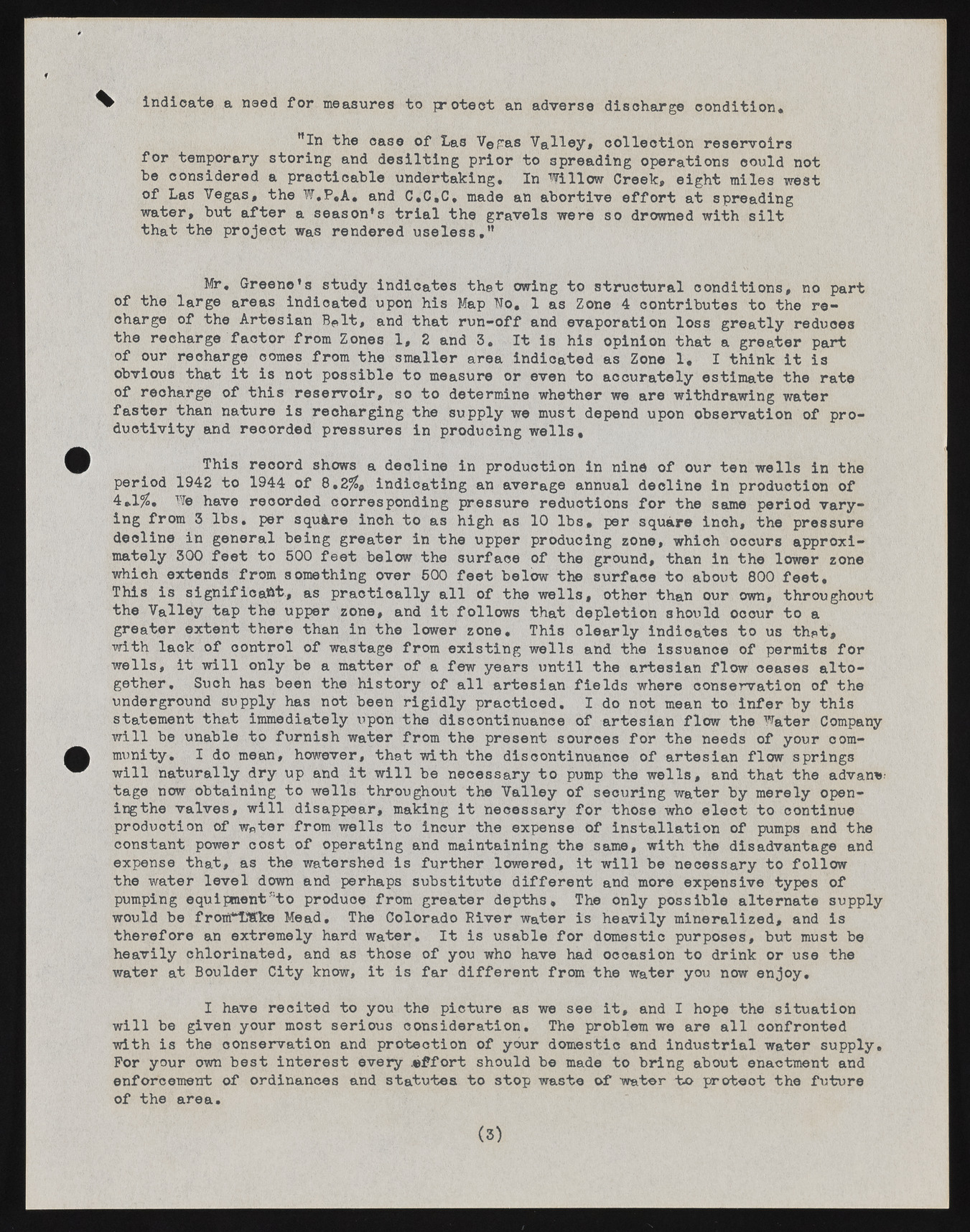Copyright & Fair-use Agreement
UNLV Special Collections provides copies of materials to facilitate private study, scholarship, or research. Material not in the public domain may be used according to fair use of copyrighted materials as defined by copyright law. Please cite us.
Please note that UNLV may not own the copyright to these materials and cannot provide permission to publish or distribute materials when UNLV is not the copyright holder. The user is solely responsible for determining the copyright status of materials and obtaining permission to use material from the copyright holder and for determining whether any permissions relating to any other rights are necessary for the intended use, and for obtaining all required permissions beyond that allowed by fair use.
Read more about our reproduction and use policy.
I agree.Information
Digital ID
Permalink
Details
More Info
Rights
Digital Provenance
Publisher
Transcription
^ indicate a need for measures to protect an adverse discharge condition* ”In the case of Las Vegas Valley, collection reservoirs for temporary storing and desilting prior to spreading operations could not be considered a practicable undertaking. In Willow Creek, eight miles west of Las Vegas, the W,P,A. and C,C,C, made an abortive effort at spreading water, but after a season's trial the gravels were so drowned with silt that the project was rendered useless,” Mr, Greene’s study indicates that owing to structural conditions, no part of the large areas indicated upon his Map Wo, 1 as Zone 4 contributes to the recharge of the Artesian Bplt, and that run-off and evaporation loss greatly reduoes the recharge factor from Zones 1, 2 and 3, It is his opinion that a greater part of our recharge comes from the smaller area indicated as Zone 1, I think it is obvious that it is not possible to measure or even to accurately estimate the rate of recharge of this reservoir, so to determine whether we are withdrawing water faster than nature is recharging the supply we must depend upon observation of productivity and recorded pressures in producing wells. This record shows a decline in production in nine of our ten wells in the period 1942 to 1944 of 8.2$, indicating an average annual decline in production of 4,1$. We have recorded corresponding pressure reductions for the same period vary-ing from 3 lbs, per squ&re inoh to as high as 10 lbs, per square inch, the pressure decline in general being greater in the upper producing zone, which occurs approximately 300 feet to 500 feet below the surface of the ground, than in the lower zone which extends from something over 500 feet below the surface to about 800 feet. This is significant, as practically all of the wells, other than our own, throughout the Valley tap the upper zone, and it follows that depletion should occur to a greater extent there than in the lower zone. This clearly indicates to us that, with lack of oontrol of wastage from existing wells and the issuance of permits for wells, it will only be a matter of a few years until the artesian flow ceases altogether. Such has been the history of all artesian fields where conservation of the underground supply has not been rigidly practiced. I do not mean to infer by this statement that immediately upon the discontinuance of artesian flow the Water Company will be unable to furnish water from the present sources for the needs of your community. I do mean, however, that with the discontinuance of artesian flow springs will naturally dry up and it will be necessary to pump the wells, and that the advan*; tage now obtaining to wells throughout the Valley of securing water by merely opening the valves, will disappear, making it necessary for those who elect to continue production of w„ter from wells to incur the expense of installation of pumps and the constant power cost of operating and maintaining the same, with the disadvantage and expense that, as the watershed is further lowered, it will be necessary to follow the water level down and perhaps substitute different and more expensive types of pumping equipmentsto produce from greater depths. The only possible alternate supply would be fronfLEke Mead, The Colorado River water is heavily mineralized, and is therefore an extremely hard water. It is usable for domestic purposes, but must be heavily chlorinated, and as those of you who have had occasion to drink or use the water at Boulder City know, it is far different from the water you now enjoy. I have recited to you the picture as we see it, and I hope the situation will be given your most serious consideration. The problem we are all confronted with is the conservation and protection of your domestic and industrial water supply. For your own best interest every .effort should be made to bring about enactment and enforcement of ordinances and statutes to stop waste of water -to proteot the future of the area. (3)

